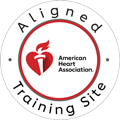In the vast realm of healthcare, nurses hold a pivotal role in patient care, often serving as the first line of defense in emergency situations. Among the multitude of skills they acquire, cardiopulmonary resuscitation (CPR) stands out as one of the most crucial. CPR is a life-saving technique that can restore circulation and breathing in individuals experiencing cardiac arrest, making it a fundamental skill for nurses to master. While theoretical knowledge provides the foundation, practical, hands-on experience is equally essential for nursing students to confidently and effectively respond to emergencies. In this comprehensive guide, we’ll delve into the importance of practical CPR training for aspiring nurses and provide valuable tips to enhance their learning experience.
Understanding the Basics of CPR
Cardiopulmonary resuscitation, commonly known as CPR, is a critical intervention used to sustain life in individuals experiencing cardiac arrest or respiratory failure. The primary goal of CPR is to maintain blood circulation and oxygenation to vital organs until advanced medical help arrives. The technique typically involves a combination of chest compressions to circulate blood, rescue breaths to provide oxygen, and the use of an Automated External Defibrillator (AED) to restore normal heart rhythm if available. Mastery of these fundamental components is essential for nurses to effectively respond to emergencies and improve patient outcomes.
While theoretical knowledge provides a theoretical understanding of CPR principles, its limitations become evident in real-life scenarios. Nursing students must be equipped with practical skills to navigate the complexities of CPR interventions confidently. In emergency situations where every second counts, the ability to perform chest compressions, deliver rescue breaths, and operate an AED accurately can mean the difference between life and death. Practical training not only enhances skill retention but also builds confidence in nursing students, preparing them to act decisively under pressure. Furthermore, hands-on experience fosters critical thinking and problem-solving skills, enabling nurses to adapt to diverse patient needs and scenarios.

Finding Quality Training Programs:
- Research Accredited CPR Courses: Nursing students should prioritize accredited CPR training courses recognized for adhering to established guidelines and standards. Institutions such as the American Heart Association (AHA) offer comprehensive CPR certification programs tailored to healthcare professionals.
- Seek Recommendations: Seeking recommendations from experienced professionals or nursing schools can help identify reputable CPR training programs. Personal referrals provide valuable insights into the quality of instruction and learning experiences.
Active Participation in Simulated Scenarios:
- Engage in Realistic Practice: Participating in simulated scenarios with the aid of manikins and medical simulators allows nursing students to apply CPR skills in a controlled environment. Realistic simulations mirror actual clinical settings, providing valuable hands-on experience and enhancing confidence.
- Emphasize Teamwork and Communication: Effective CPR interventions require seamless coordination and communication among healthcare providers. Nursing students should practice teamwork skills during simulations, focusing on clear communication, role assignment, and mutual support.
Regular Refresher Courses:
- Stay Updated on Guidelines: CPR guidelines and techniques evolve based on emerging research and best practices. Nursing students should schedule regular refresher courses to stay abreast of the latest guidelines and advancements in CPR.
- Reinforce Skills: Regular practice and reinforcement are essential for maintaining CPR proficiency. Refresher courses offer opportunities to review key concepts, practice skills, and receive feedback from instructors, ensuring readiness to respond to emergencies effectively.
Utilizing Technology and Resources
- Explore Interactive Learning Tools: Interactive CPR training apps, online modules, and virtual reality simulations offer innovative learning experiences for nursing students. These resources complement traditional training methods and provide additional opportunities for skill development, and practice.
- Incorporate Simulations: Simulations immerse nursing students in realistic CPR scenarios, allowing them to practice skills in a virtual environment. Simulations enhance engagement and provide valuable feedback, enhancing learning outcomes.
Overcoming Challenges in CPR Training
CPR training can present various challenges for nursing students, ranging from technical difficulties to emotional stress. It’s essential to address these challenges proactively and develop strategies to overcome them effectively. Common challenges include
Call Us Now
Get the Best CPR Class in Tampa Today!
Technical Proficiency: Mastering CPR techniques requires precision and coordination. Nursing students may encounter challenges in achieving optimal compression depth, rate, and hand placement. Regular practice and feedback from instructors can help improve technical proficiency and confidence.
Emotional Stress: Performing CPR can evoke strong emotions, including fear, anxiety, and uncertainty. Nursing students must learn to manage stress and maintain composure in high-pressure situations. Strategies such as mindfulness techniques, deep breathing exercises, and peer support can help alleviate stress and foster resilience.
Time Constraints: Balancing CPR training with academic coursework and clinical responsibilities can be challenging for nursing students. Prioritizing time management, setting realistic goals, and seeking support from peers and mentors can help alleviate time constraints and ensure consistent progress in CPR training.
Practical CPR training is indispensable for aspiring nurses, equipping them with the skills and confidence needed to respond effectively in emergency situations. By actively seeking out hands-on experiences and embracing continuous learning opportunities, nursing students can become invaluable assets in promoting patient safety and improving outcomes. As they embark on their journey in the nursing profession, remember the transformative power of CPR skills in making a difference in the lives of those they serve.
In conclusion, practical CPR training is essential for aspiring nurses to confidently respond to emergencies and save lives in clinical settings. By incorporating hands-on techniques and real-life scenarios, CPR Classes Tampa, an American Heart Association training site renowned for its stress-free and comprehensive courses, equips nurses with the skills and confidence needed to perform CPR effectively. Prioritizing CPR certification in Tampa through reputable providers like CPR Classes Tampa ensures that nurses not only meet professional requirements but also become proficient in life-saving techniques that can make a critical difference in patient outcomes.


